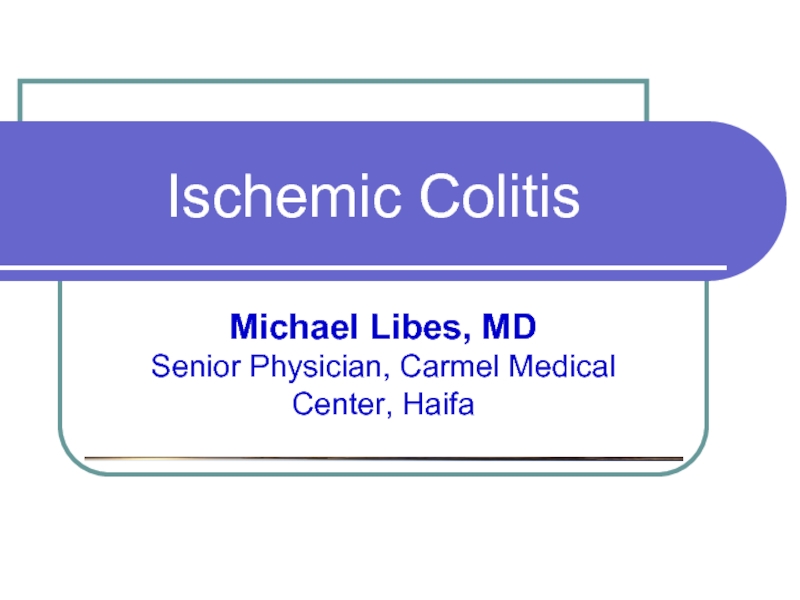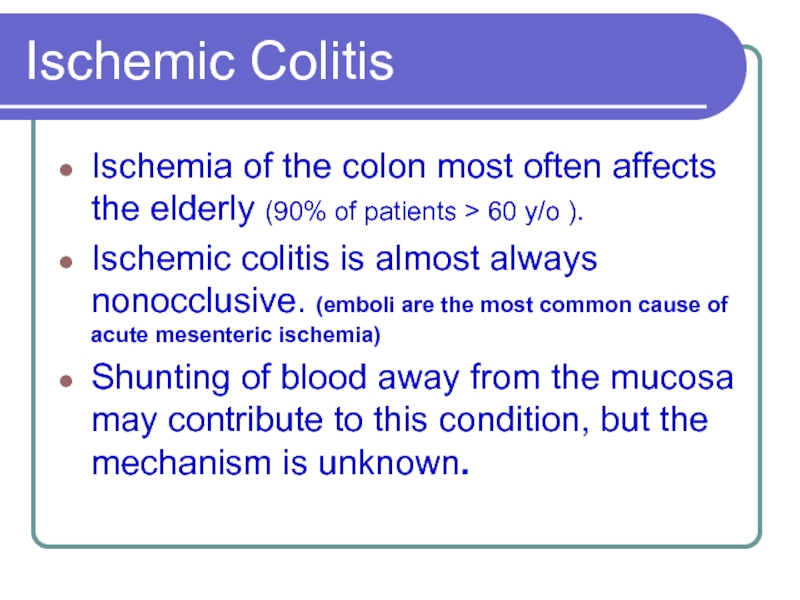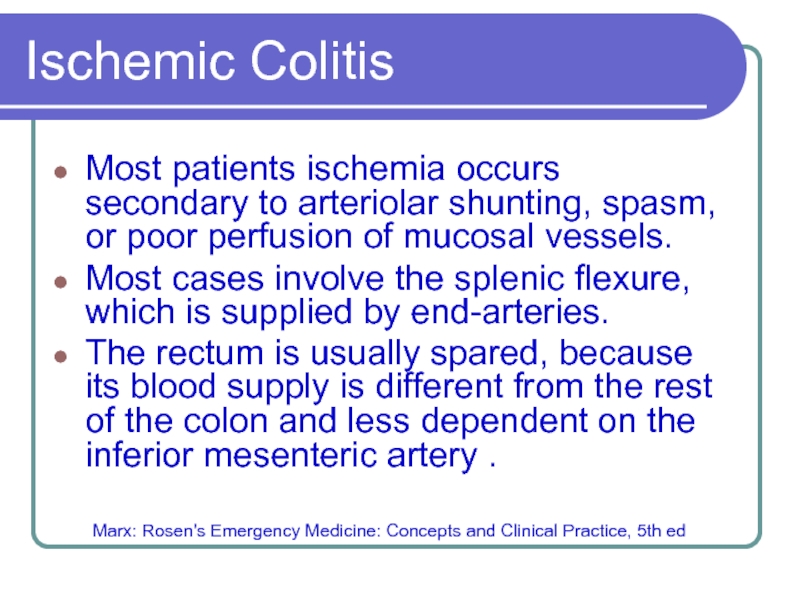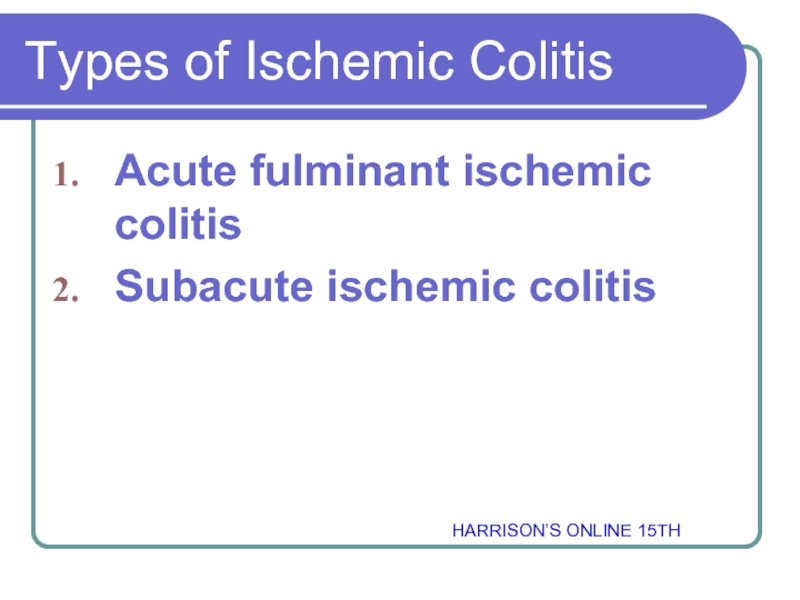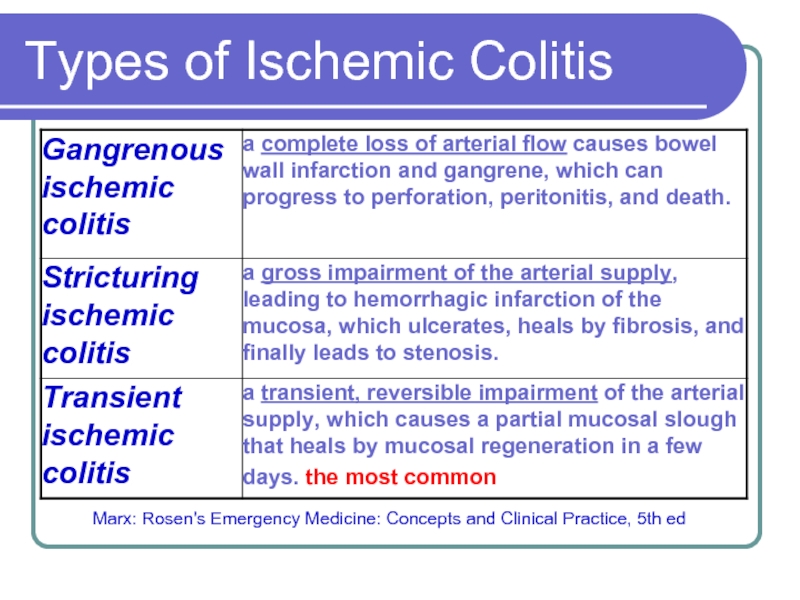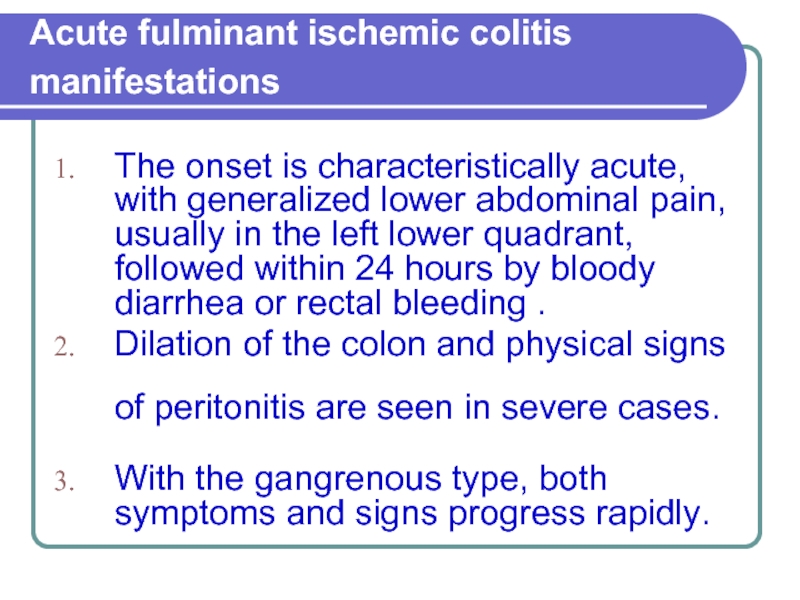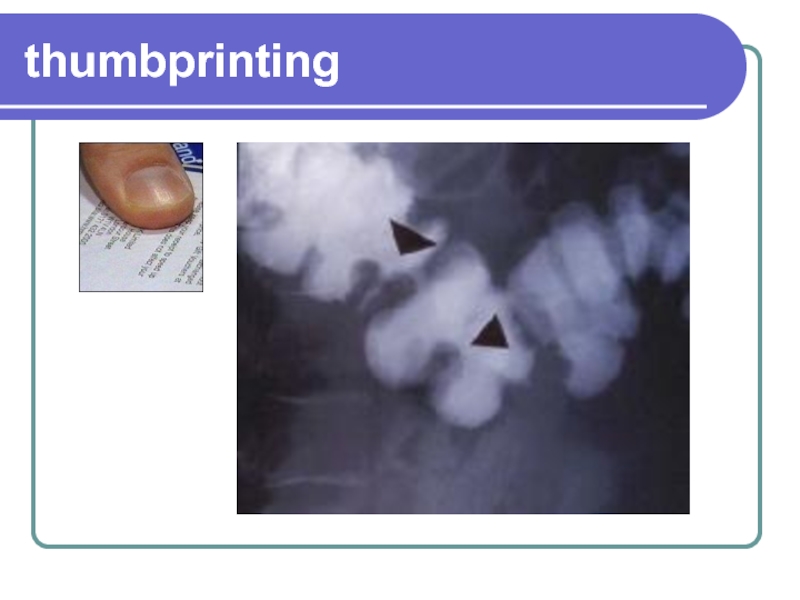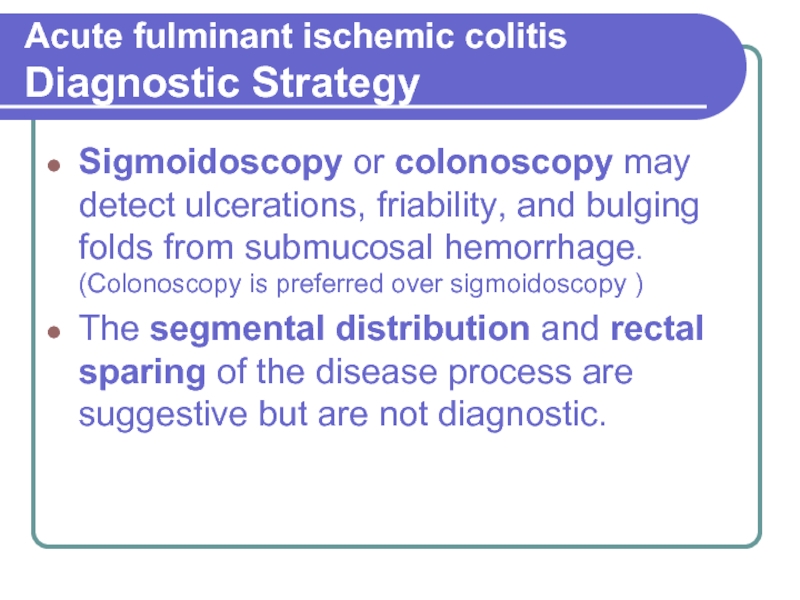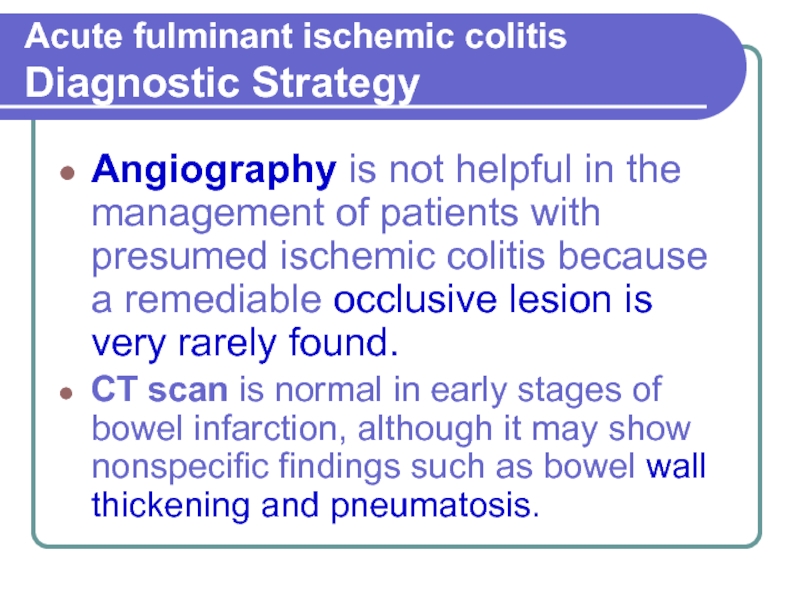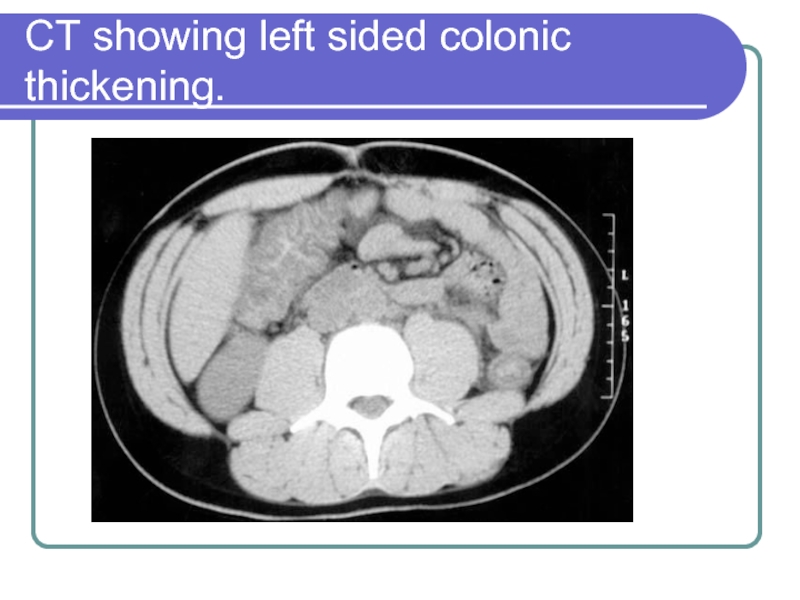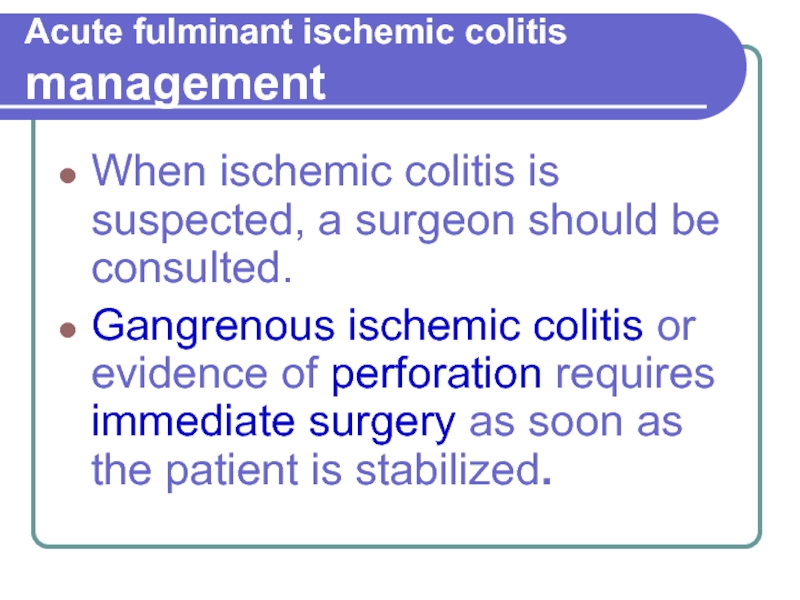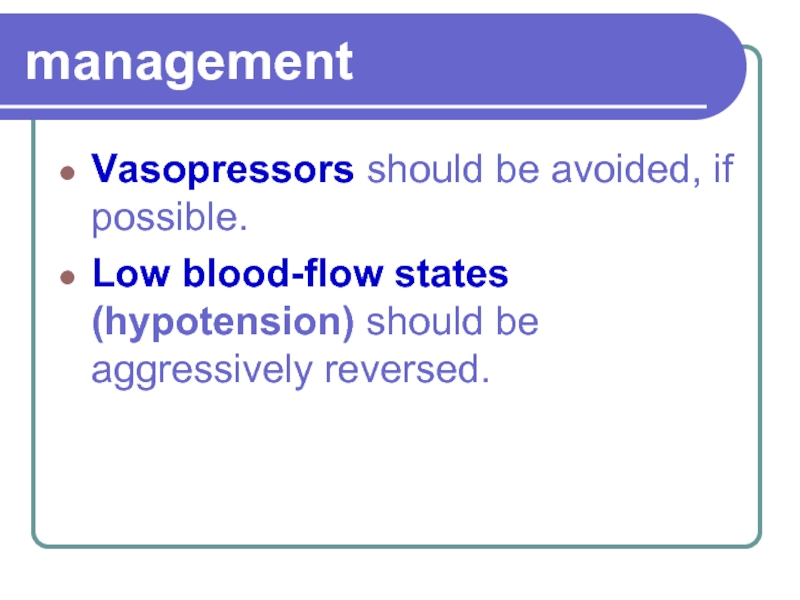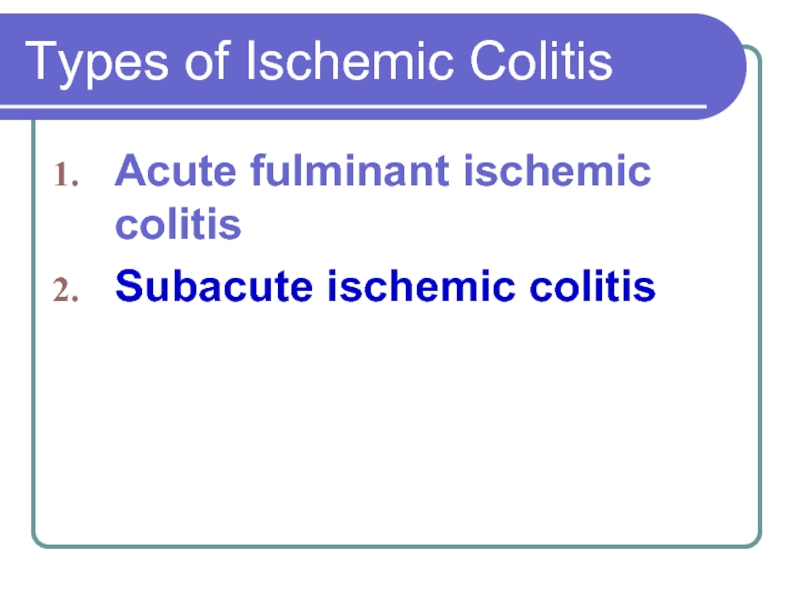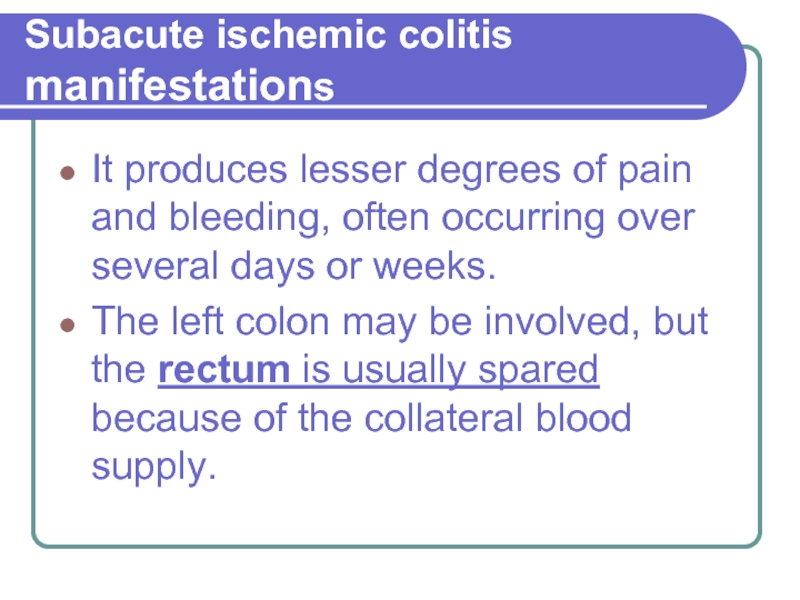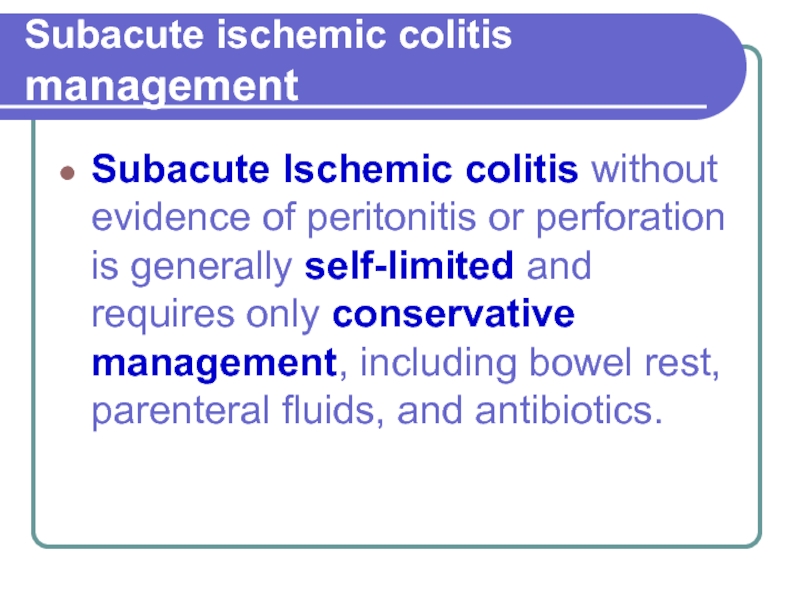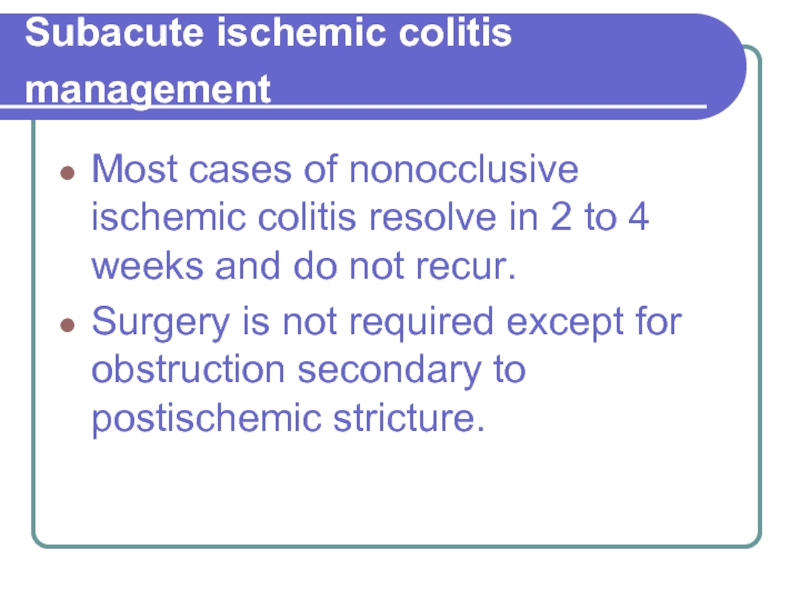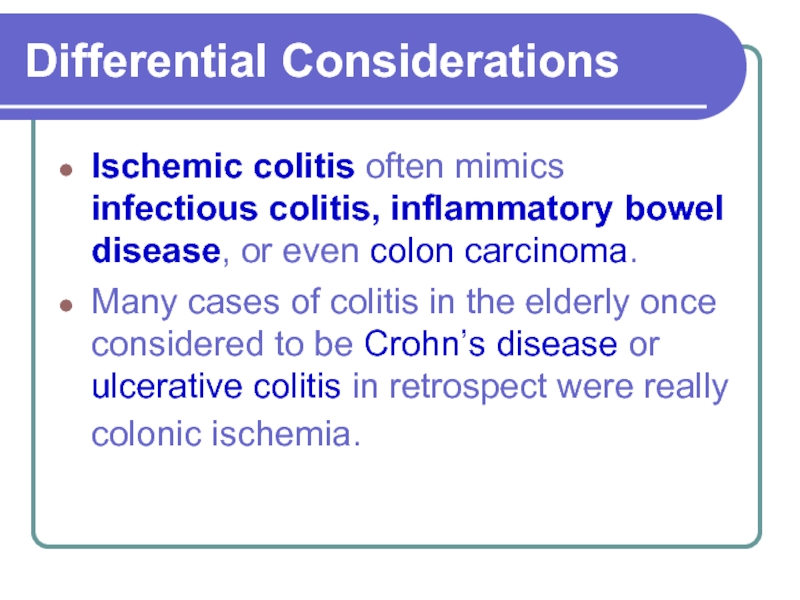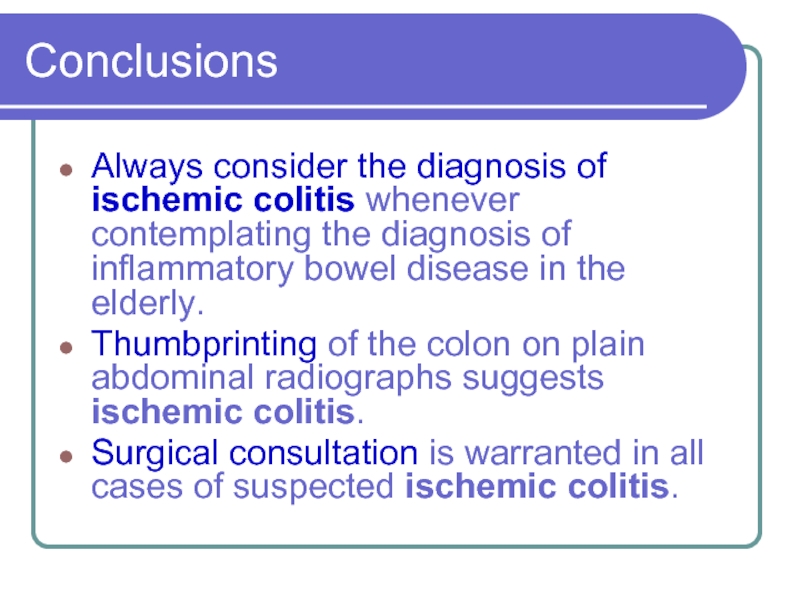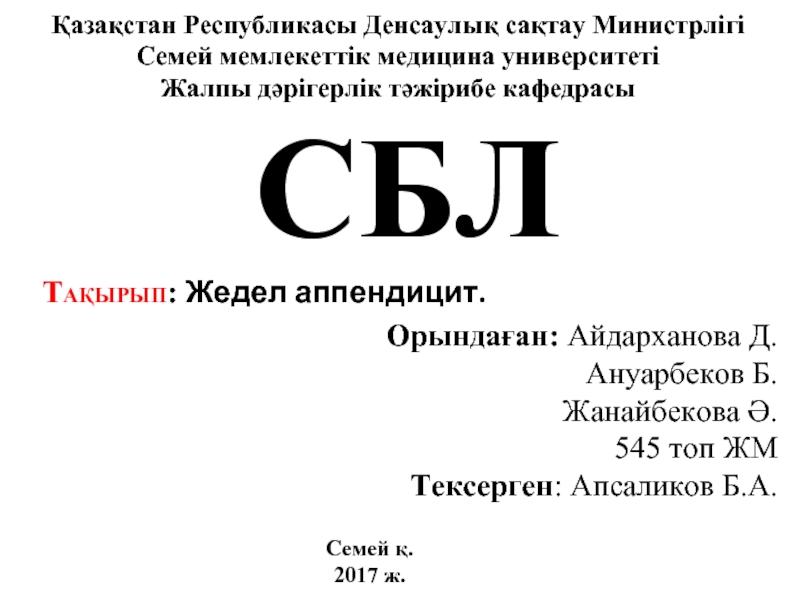- Главная
- Разное
- Дизайн
- Бизнес и предпринимательство
- Аналитика
- Образование
- Развлечения
- Красота и здоровье
- Финансы
- Государство
- Путешествия
- Спорт
- Недвижимость
- Армия
- Графика
- Культурология
- Еда и кулинария
- Лингвистика
- Английский язык
- Астрономия
- Алгебра
- Биология
- География
- Детские презентации
- Информатика
- История
- Литература
- Маркетинг
- Математика
- Медицина
- Менеджмент
- Музыка
- МХК
- Немецкий язык
- ОБЖ
- Обществознание
- Окружающий мир
- Педагогика
- Русский язык
- Технология
- Физика
- Философия
- Химия
- Шаблоны, картинки для презентаций
- Экология
- Экономика
- Юриспруденция
Ischemic Colitis презентация
Содержание
- 1. Ischemic Colitis
- 2. Ischemic Colitis Ischemia of the colon most
- 3. Ischemic Colitis Most patients ischemia occurs secondary
- 4. Types of Ischemic Colitis Acute fulminant ischemic
- 5. Types of Ischemic Colitis Marx: Rosen's Emergency Medicine: Concepts and Clinical Practice, 5th ed
- 6. Acute fulminant ischemic colitis manifestations The
- 7. Acute fulminant ischemic colitis Diagnostic Strategy No
- 8. thumbprinting
- 9. Acute fulminant ischemic colitis Diagnostic Strategy Sigmoidoscopy
- 10. Acute fulminant ischemic colitis Diagnostic Strategy Angiography
- 11. CT showing left sided colonic thickening.
- 12. Acute fulminant ischemic colitis management When ischemic
- 13. management Vasopressors should be avoided, if possible.
- 14. Types of Ischemic Colitis Acute fulminant ischemic
- 15. Subacute ischemic colitis manifestations It produces
- 16. Subacute ischemic colitis management Subacute Ischemic colitis
- 17. Subacute ischemic colitis management Most cases
- 18. Differential Considerations Ischemic colitis often mimics infectious
- 19. Conclusions Always consider the diagnosis of ischemic
Слайд 2Ischemic Colitis
Ischemia of the colon most often affects the elderly (90%
of patients > 60 y/o ).
Ischemic colitis is almost always nonocclusive. (emboli are the most common cause of acute mesenteric ischemia)
Shunting of blood away from the mucosa may contribute to this condition, but the mechanism is unknown.
Ischemic colitis is almost always nonocclusive. (emboli are the most common cause of acute mesenteric ischemia)
Shunting of blood away from the mucosa may contribute to this condition, but the mechanism is unknown.
Слайд 3Ischemic Colitis
Most patients ischemia occurs secondary to arteriolar shunting, spasm, or
poor perfusion of mucosal vessels.
Most cases involve the splenic flexure, which is supplied by end-arteries.
The rectum is usually spared, because its blood supply is different from the rest of the colon and less dependent on the inferior mesenteric artery .
Most cases involve the splenic flexure, which is supplied by end-arteries.
The rectum is usually spared, because its blood supply is different from the rest of the colon and less dependent on the inferior mesenteric artery .
Marx: Rosen's Emergency Medicine: Concepts and Clinical Practice, 5th ed
Слайд 4Types of Ischemic Colitis
Acute fulminant ischemic colitis
Subacute ischemic colitis
HARRISON’S
ONLINE 15TH
Слайд 5Types of Ischemic Colitis
Marx: Rosen's Emergency Medicine: Concepts and Clinical Practice,
5th ed
Слайд 6Acute fulminant ischemic colitis manifestations
The onset is characteristically acute, with
generalized lower abdominal pain, usually in the left lower quadrant, followed within 24 hours by bloody diarrhea or rectal bleeding .
Dilation of the colon and physical signs of peritonitis are seen in severe cases.
With the gangrenous type, both symptoms and signs progress rapidly.
Dilation of the colon and physical signs of peritonitis are seen in severe cases.
With the gangrenous type, both symptoms and signs progress rapidly.
Слайд 7Acute fulminant ischemic colitis Diagnostic Strategy
No specific serum markers proven in
the diagnosis of intestinal ischemia.
Abdominal films may reveal thumbprinting from submucosal hemorrhage and edema .
* (barium enema is contraindicated in cases of gangrenous ischemic colitis because of the risk of perforation )
Abdominal films may reveal thumbprinting from submucosal hemorrhage and edema .
* (barium enema is contraindicated in cases of gangrenous ischemic colitis because of the risk of perforation )
Слайд 9Acute fulminant ischemic colitis Diagnostic Strategy
Sigmoidoscopy or colonoscopy may detect ulcerations,
friability, and bulging folds from submucosal hemorrhage. (Colonoscopy is preferred over sigmoidoscopy )
The segmental distribution and rectal sparing of the disease process are suggestive but are not diagnostic.
The segmental distribution and rectal sparing of the disease process are suggestive but are not diagnostic.
Слайд 10Acute fulminant ischemic colitis Diagnostic Strategy
Angiography is not helpful in the
management of patients with presumed ischemic colitis because a remediable occlusive lesion is very rarely found.
CT scan is normal in early stages of bowel infarction, although it may show nonspecific findings such as bowel wall thickening and pneumatosis.
CT scan is normal in early stages of bowel infarction, although it may show nonspecific findings such as bowel wall thickening and pneumatosis.
Слайд 12Acute fulminant ischemic colitis management
When ischemic colitis is suspected, a surgeon
should be consulted.
Gangrenous ischemic colitis or evidence of perforation requires immediate surgery as soon as the patient is stabilized.
Gangrenous ischemic colitis or evidence of perforation requires immediate surgery as soon as the patient is stabilized.
Слайд 13management
Vasopressors should be avoided, if possible.
Low blood-flow states (hypotension) should
be aggressively reversed.
Слайд 15Subacute ischemic colitis manifestations
It produces lesser degrees of pain and
bleeding, often occurring over several days or weeks.
The left colon may be involved, but the rectum is usually spared because of the collateral blood supply.
The left colon may be involved, but the rectum is usually spared because of the collateral blood supply.
Слайд 16Subacute ischemic colitis management
Subacute Ischemic colitis without evidence of peritonitis or
perforation is generally self-limited and requires only conservative management, including bowel rest, parenteral fluids, and antibiotics.
Слайд 17Subacute ischemic colitis management
Most cases of nonocclusive ischemic colitis resolve
in 2 to 4 weeks and do not recur.
Surgery is not required except for obstruction secondary to postischemic stricture.
Surgery is not required except for obstruction secondary to postischemic stricture.
Слайд 18Differential Considerations
Ischemic colitis often mimics infectious colitis, inflammatory bowel disease, or
even colon carcinoma.
Many cases of colitis in the elderly once considered to be Crohn’s disease or ulcerative colitis in retrospect were really colonic ischemia.
Many cases of colitis in the elderly once considered to be Crohn’s disease or ulcerative colitis in retrospect were really colonic ischemia.
Слайд 19Conclusions
Always consider the diagnosis of ischemic colitis whenever contemplating the diagnosis
of inflammatory bowel disease in the elderly.
Thumbprinting of the colon on plain abdominal radiographs suggests ischemic colitis.
Surgical consultation is warranted in all cases of suspected ischemic colitis.
Thumbprinting of the colon on plain abdominal radiographs suggests ischemic colitis.
Surgical consultation is warranted in all cases of suspected ischemic colitis.
